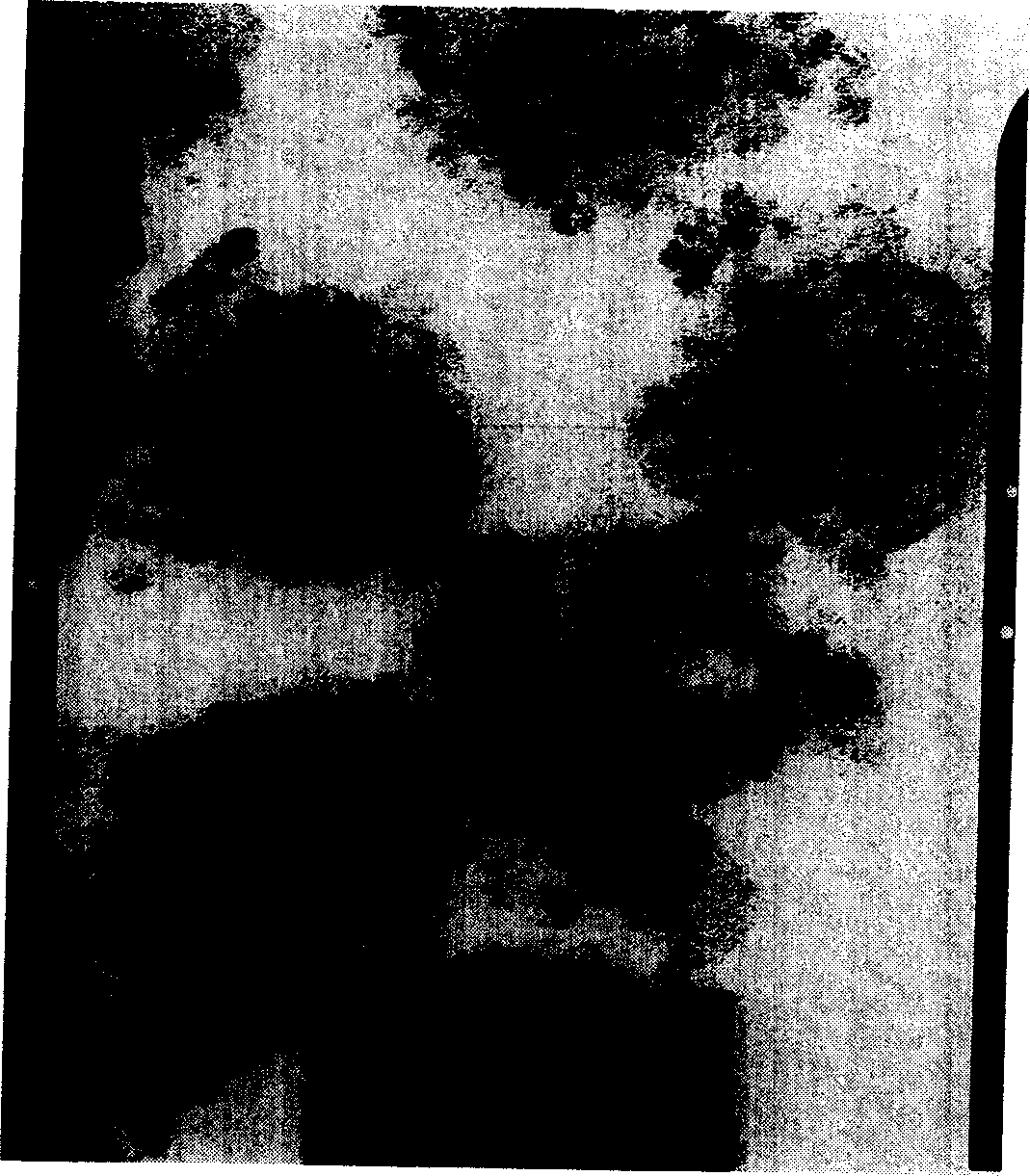Nano compound oxide preparation method
A composite oxide and nano-composite technology, which is applied in the field of preparation of nano-composite oxides, can solve problems such as difficult separation, high price, and large amount of surfactant
- Summary
- Abstract
- Description
- Claims
- Application Information
AI Technical Summary
Problems solved by technology
Method used
Image
Examples
Embodiment 1
[0076] Mix 50g of second-line oil and 8g of SP-80, heat to dissolve at 80°C, and mix well; heat 249g of ferric nitrate hexahydrate to 80°C to melt, slowly add to the above mixture, and mix for 15 minutes to form a uniform supersolubilized colloid. Add 300g of anhydrous aluminum chloride to 90g of ethanol to dissolve, add to the above colloid and mix evenly. 303 g of saturated ammonia water at 20° C. was added dropwise and aged for 10 hours to obtain a nano-iron-aluminum oxide gel. The composite oxide gel was calcined at 300° C. for 2 hours by flowing nitrogen gas, and then calcined at 550° C. for 8 hours by flowing nitrogen gas, that is, the nano-iron-aluminum composite oxide of this embodiment. BET specific surface: 320m 2 / g, pore volume: 0.52ml / g, average pore diameter: 5nm, average particle diameter: 32nm.
Embodiment 2
[0078] Heat and dissolve 56g of four-line oil, 4g of light deasphalted oil and 2g of SP-60 at 100°C, and mix well; heat 650g of aluminum nitrate nonahydrate to 100°C to melt, slowly add to the above mixture, and mix for 30 minutes to form a uniform super To solubilize the colloid, add 143 g of titanium tetrachloride at room temperature to the above-mentioned super solubilized colloid and mix for 18 minutes. The reactor was closed, and 145 g of ammonia gas was added at a temperature of 120° C. to obtain a nano-titanium-aluminum gel. The titanium-aluminum gel is calcined at 280° C. for 2.5 hours and 580° C. for 10 hours by blowing air into it, which is the nano-titanium-aluminum composite oxide of this embodiment. BET specific surface: 260m 2 / g, pore volume: 0.44ml / g, average pore diameter: 4.2nm, average particle diameter: 45nm.
Embodiment 3
[0080] Heat 35g of common three-line oil, 5g of minus three-line wax paste, and 15g of polyisobutenyl diethylene glycol maleate at 120°C to dissolve and mix evenly; mix 248g of aluminum chloride, 225g of zirconium oxychloride octahydrate, 260g of urea and 212g of water Mix and heat to 120°C to melt, slowly add to the above mixture, and mix for 20 minutes to form a uniform supersolubilized colloid. Seal the reactor, react at 80° C. for 4 hours, and age for 5 hours to obtain nano zirconium aluminum hydroxide gel. The zirconium-aluminum hydroxide gel is baked in air at 250°C for 2 hours, and at 600°C for 5 hours, which is the nano-zirconium-aluminum composite oxide of this embodiment. BET specific surface: 300m 2 / g, pore volume: 0.58ml / g, average pore diameter: 5nm, average particle diameter: 30nm.
PUM
| Property | Measurement | Unit |
|---|---|---|
| melting point | aaaaa | aaaaa |
| melting point | aaaaa | aaaaa |
| melting point | aaaaa | aaaaa |
Abstract
Description
Claims
Application Information
 Login to View More
Login to View More - R&D
- Intellectual Property
- Life Sciences
- Materials
- Tech Scout
- Unparalleled Data Quality
- Higher Quality Content
- 60% Fewer Hallucinations
Browse by: Latest US Patents, China's latest patents, Technical Efficacy Thesaurus, Application Domain, Technology Topic, Popular Technical Reports.
© 2025 PatSnap. All rights reserved.Legal|Privacy policy|Modern Slavery Act Transparency Statement|Sitemap|About US| Contact US: help@patsnap.com

